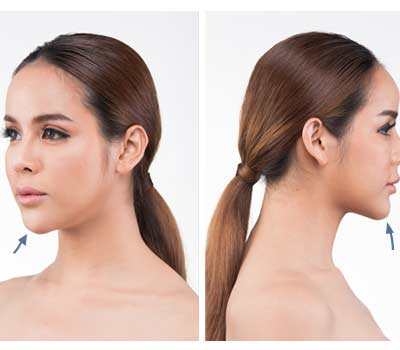 Chin Augmentation or Mentoplasty is the surgery that aims to increase, reduce or remodel the chin, aiming to improve facial harmony. This procedure is usually performed after complete facial growth, which usually occurs after 16 – 18 years of age in adolescents. Ment surgery is commonly associated with rhinoplasty, providing a more harmonious balance of the face and more satisfactory results.
Chin Augmentation or Mentoplasty is the surgery that aims to increase, reduce or remodel the chin, aiming to improve facial harmony. This procedure is usually performed after complete facial growth, which usually occurs after 16 – 18 years of age in adolescents. Ment surgery is commonly associated with rhinoplasty, providing a more harmonious balance of the face and more satisfactory results.
Who can undergo a chin augmentation
Those who would like to change the look of their weak-looking chin can benefit from chin augmentation. Likewise, it occurs otherwise only with women who are unhappy with the chin for being too prominent or manly appearance. In this case, chin reduction can be the solution to achieve a more feminine appearance.
Types of chin augmentation
The type of chin augmentation surgery performed depends on the material used for the implant and the need for bone manipulation for the procedure. Depending on these concepts, the patient may need either chin augmentation thanks to the placement of an implant or bone reduction surgery.
Chin reduction surgery is a procedure that reforms the bone contour of the chin area, which changes the height and width of the bone to improve the patient’s facial profile and to achieve a balance of the facial structure. The surgeon performs this surgery by lowering the bone with an osteotomy (cutting the bone) with the help of a special machine (jigsaw). You need to take a facial X-ray of the patient before surgery to assess his facial bone structure. This x-ray provides the information needed for the surgeon to determine how much bone needs to be removed.
The surgery
Chin augmentation can be performed using different techniques, according to the patient’s need and desire.
For chin augmentation, it is possible to perform with a hyaluronic acid filling or fat graft (chin fat grafting), with the use of implants (prostheses) of silicone or porous polyethylene (Porex or Medpor), or with bone advancement.
In chin augmentation by bone advancement or placement of implants, it is common to make an incision in the inner part of the lower lip to perform the detachment and access to the chin region. In bone advancement, a small fracture of the chin bone is performed and this portion is fixed with titanium plates in the new position, while with the use of implants, these are placed and fixed in the detached chin region.
The increase made by fat grafting or the use of hyaluronic acid does not require cuts, only small holes for the introduction of the microcannula.
In reduction mentoplasty, it is more common to make an incision in the lower part of the chin, which is hidden in the transition from the chin to the neck, becoming practically imperceptible after a while. After accessing the chin, it is possible to perform bone grinding or soft tissue resection, so that reduction occurs.
The postoperative
Chin plastic surgery is considered a procedure whose postoperative period is practically painless and has a quick recovery.
In the first few days after surgery, there may be some swelling, bruises (purples) and discomfort in the chin and neck region. A diet with cold, liquid and pasty foods is advised for the first 3 days, progressing over the next few days. After 1 week it is already possible to resume the work or study routine, but physical activities must wait at least 3 weeks.
Patients are instructed to apply cold compresses to the chin and neck region, sleep on their back and use the elastic chin strap for at least 15 days, in addition to avoiding direct exposure to the sun for 30 days.
The stitches do not need to be removed, as they are performed with absorbable threads, being degraded by the body itself. The final result is obtained between 3 to 6 months after the surgery.
The risks
The general risks of all surgeries vary according to the specific characteristics of each patient, such as age, comorbidities (health problems), weight, smoking, medication use, genetic factors, among others. Therefore, they are explained in face-to-face consultation, due to the individual conditions of each one.
In chin augmentation, the most important, but low, complications and specific surgical risks are: infection, bleeding, hematoma, poor healing, asymmetry and change in sensitivity, usually transient.







